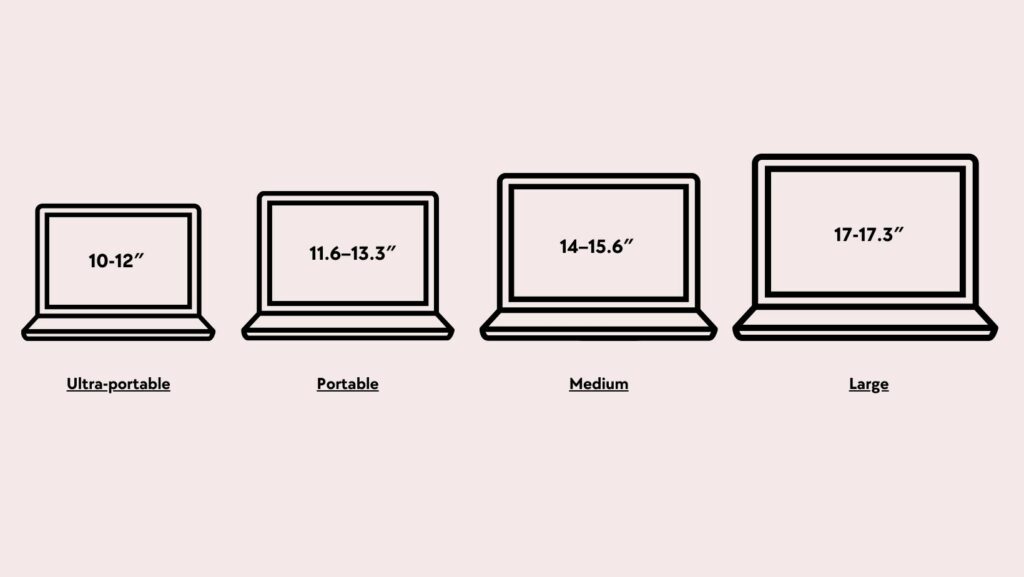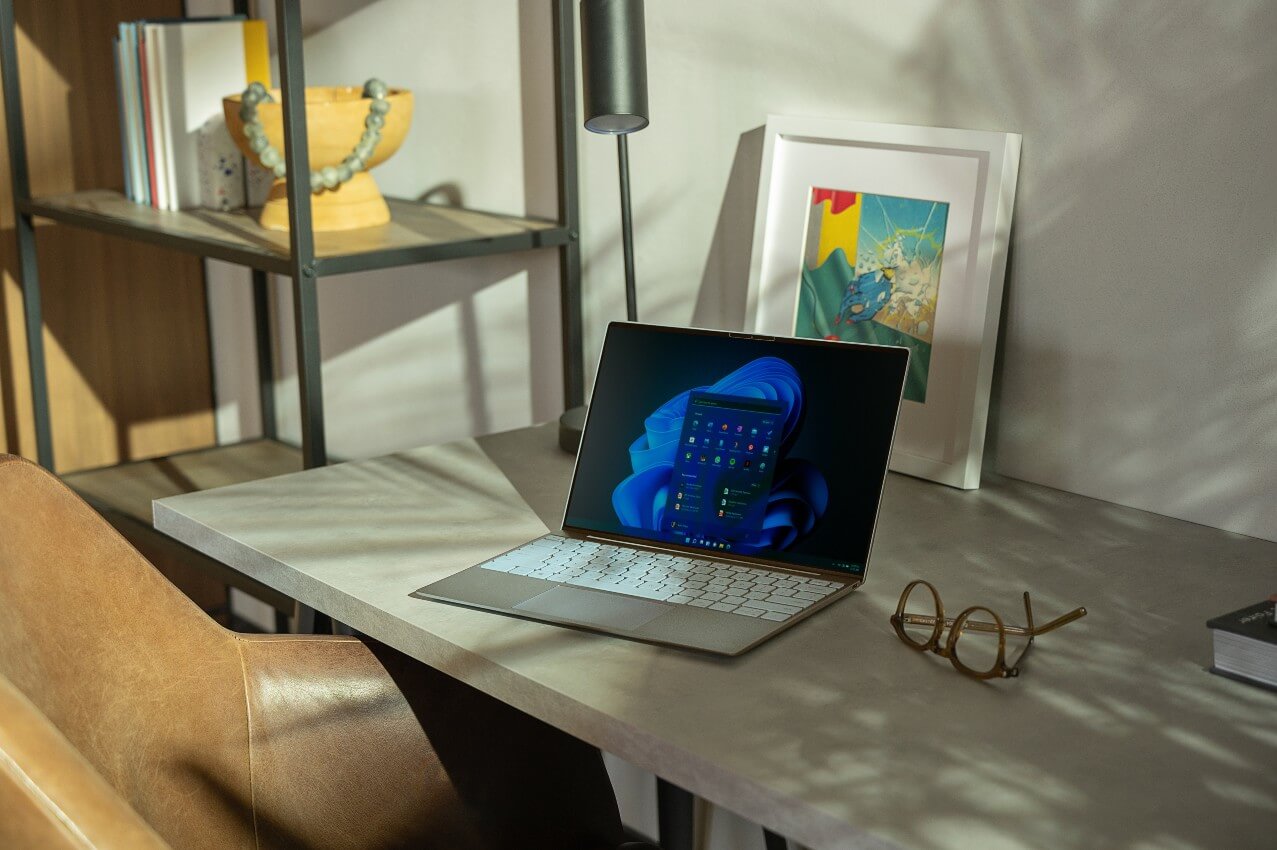Purchasing a laptop has some specifications that you should note, especially if it is your first laptop. One essential member on the list of necessary specifications is the laptop screen size, which affects your user experience. You need to note the laptop’s standard screen sizes and your preference for a better view. We bring you a detailed guide on the standard screen sizes you can get along with the purpose of its creation. So, let’s dive into the details and help you decide on the laptop screen size to choose on purchase.
What Are The Standard Screen Sizes And Their Purposes?
Ultra Portable (10 – 12″)
Laptops with ultra-portable screen sizes are designed to be smaller than the rest of the bunch you see. They are easier to carry and fit when placed on a plane tray during your flight. However, purchasing laptops with this screen size isn’t the best choice if you use them for daily work. It’s an excellent fit for frequent travelers due to its small size but not all 10-12″ screens give you high resolutions.
Portable (11.6 – 13.3″)
You usually find laptops with portable screen sizes among students or workers who move about a little less frequently. The laptops designed with this screen size are also light but not comparable to the ultra-portable in weight. They are designed to give you a decent battery life and are much more comfortable in terms of screen resolution. These laptops are great if your activities don’t demand a high resolution or processing power to complete during daily use.
Medium (14 – 15.6″)
Here is the typical laptop screen size that you will find being used by people, which is proven by different surveys. The main reason is that these laptops provide a better screen resolution and enough space for temperature control. You will find most laptops with this screen size gaming PCs and workstations with more frequent daily use. If you want a bigger screen with a small body, consider getting a laptop with a higher screen-to-body ratio.
Large (17 – 17.3″)
The large screen size exists at the top of the list providing features that exceed the other options’ limits. You enjoy higher resolution with better picture and color quality on these screens, which gives better eye comfort. However, they are heavier to move around and mainly serve you best as a desktop replacement, especially for streaming and gaming. It’s also a great fit if your activities involve filmmaking or you need larger screens for real estate viewing.

What Laptop Screen Size Do Most People Choose?
Most people prefer the 15.6″ screen size since these laptop options usually give all-purpose benefits. You get to code, enjoy games, and have better resolution without suffering the weight you usually would with a 17″ screen. It’s also a go-to screen size for people who use their laptops daily but not on a flight. The 13.3 screen size is also popular with the current trends, especially with laptops with more screen-to-body ratio.
Screen Repairer Opinions
Comments from screen repairers rank the 13″ and 15″ sizes as the most commonly fixed screens compared to the 17″. They go further to state that the portability of the former makes affects its frequent purchase by the public. Most repairers also state that the 10 – 12″ size is also not as common as the first two stated.
Other Things To Consider When Choosing A Laptop Screen Size
You should note that your decision regarding the screen size isn’t concerned with the visible aspects alone. It also includes other important details to give you a better experience when using your laptop. Here are some of the specific specifications that you shouldn’t ignore when making decisions on your preferred screen size:
Resolution
It’s essential to note the screen’s resolution, especially if you are particular about picture quality. The resolution of your screen refers to the pixel numbers it can accommodate, which come in horizontal ad vertical readings. For instance, 1920 x 1080 reads for horizontal and vertical pixels and gives excellent picture quality. You should prioritize getting a laptop with this resolution if you are not working on a tight budget for your purchase.
Display
The display of the screens also matters, and the difference lies in the panel used for their production. Screen panels affect the color quality your screen gives you based on brightness and contrast. They come with differences in color accuracy, with some better than others, and you shouldn’t ignore them during selection. Some common panels used to improve screen display are LED, IPS, and AMOLED panels.
Aspect Ratio
It would be of the best interest if you also considered the aspect ratio since it’s the size display somewhat different from the screen size. An aspect ratio rated 21:9 stands for ultrawide and is rarely found among laptop screens but mostly on monitors. Displays of 1080p on screens with this aspect ratio tend to show up as 2560 x 1080. There are also aspect ratios of 16:9 and 32:9, which display differently when compared to each other and the former. The common aspect ratio in laptops is 16:9, which offers 1280 x 720, 1920 x 1080, or 1366x 720.
Dimensions
Lastly, observing the dimensions of the laptop you want to buy is essential, not the screen alone. The width, weight, and height make up the dimensions, and matching them with your preference helps with your decision. It lets you know which laptop to go for, especially if you want more screen-to-body ratio when selecting. Consider visiting stores even without the aim of getting one so you can familiarize yourself and ease the decision-making process.
Make Your Decision
Your decision just got easier, and this detailed guide above and your options have become clearer than before. You now know the standard screen sizes and the best use for them to aid your selection. Go ahead and pick your preferred laptop screen choice, and don’t forget the other things to consider during the selection.
FAQs
It’s rare to get these screens with higher resolutions, so opting for a medium screen is the best choice.
Large screens are pretty heavy to move about, but 17″ tend to be heavier and would be better as desktop replacements.

